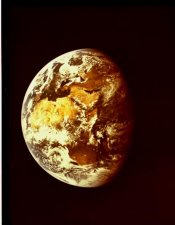Yes, I was present when they were processed. In fact, I flew in a Huey back from the cape with the film for rush processing. We had to avoid the crowds on the beach, so I laid on air transport. The cross processed film had color problems that were partially corrected by Life and Nat. Geo. I have a special edition NG magazine for "participants" that is about 25 pages long and has many photos.
Sadly, some are ageing poorly and many have been destroyed in a NASA house cleaning years ago. Same thing with USAF copies. Gone! I have posted some here.
PE
Source that
space flight originals (official term used on the metal boxes that contain them) have been lost?
As far as I know, the originals are inside a canister, which is inside a narrow metal box (with a label describing whats inside,
SPACE FLIGHT ORIGINAL) those are then inside a climatec-controlled freezer, which is inside a climate controlled archival room, which is inside Film Archive (Building 8) at Johnson Space Center (JSC). Due to the importance in preserving these films, the original film is not allowed to leave the building.
The film is stored in a freezer (0° F), which is located in a large refrigerator that is maintained at 55° F. The staff at JSC has a rigorous procedure for removing film from the freezer for scanning or making copies.
- The sealed film canister is transferred from the freezer to the refrigerator where it is allowed to equilibrate for 24 hours.
- The sealed canister is then removed from the refrigerator and placed in a room temperature environment and allowed to equilibrate for an additional 24 hours.
- The film is then removed from the canister, hand cleaned and used for whatever reason it was opened for.
- The film is placed back in the canister, sealed, and then placed back in the cold vault.







